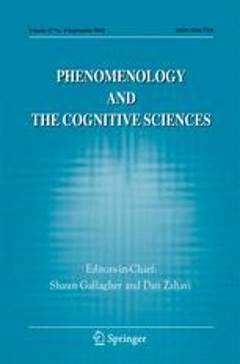Husserl's hyletic data and phenomenal consciousness
pp. 501-519
Abstract
In the Logical Investigations, Ideas I and many other texts, Husserl maintains that perceptual consciousness involves the intentional "animation" or interpretation of sensory data or hyle, e.g., "color-data," "tone-data," and algedonic data. These data are not intrinsically representational nor are they normally themselves objects of representation, though we can attend to them in reflection. These data are "immanent" in consciousness; they survive the phenomenological reduction. They partly ground the intuitive or "in-the-flesh" aspect of perception, and they have a determinacy of character that we do not create but can only discover. This determinate, non-representational stratum of perceptual consciousness also serves as a bridge between consciousness and the world beyond it. I articulate and defend this conception of perceptual consciousness. I locate the view in the space of contemporary positions on phenomenal character and argue for its superiority. I close by briefly arguing that the Husserlian account is perfectly compatible with physicalism (this involves disarming the Grain Problem).
Publication details
Published in:
Kriegel Uriah (2013) Phenomenal intentionality past and present. Phenomenology and the Cognitive Sciences 12 (3).
Pages: 501-519
DOI: 10.1007/s11097-013-9297-z
Full citation:
Williford Kenneth (2013) „Husserl's hyletic data and phenomenal consciousness“. Phenomenology and the Cognitive Sciences 12 (3), 501–519.


